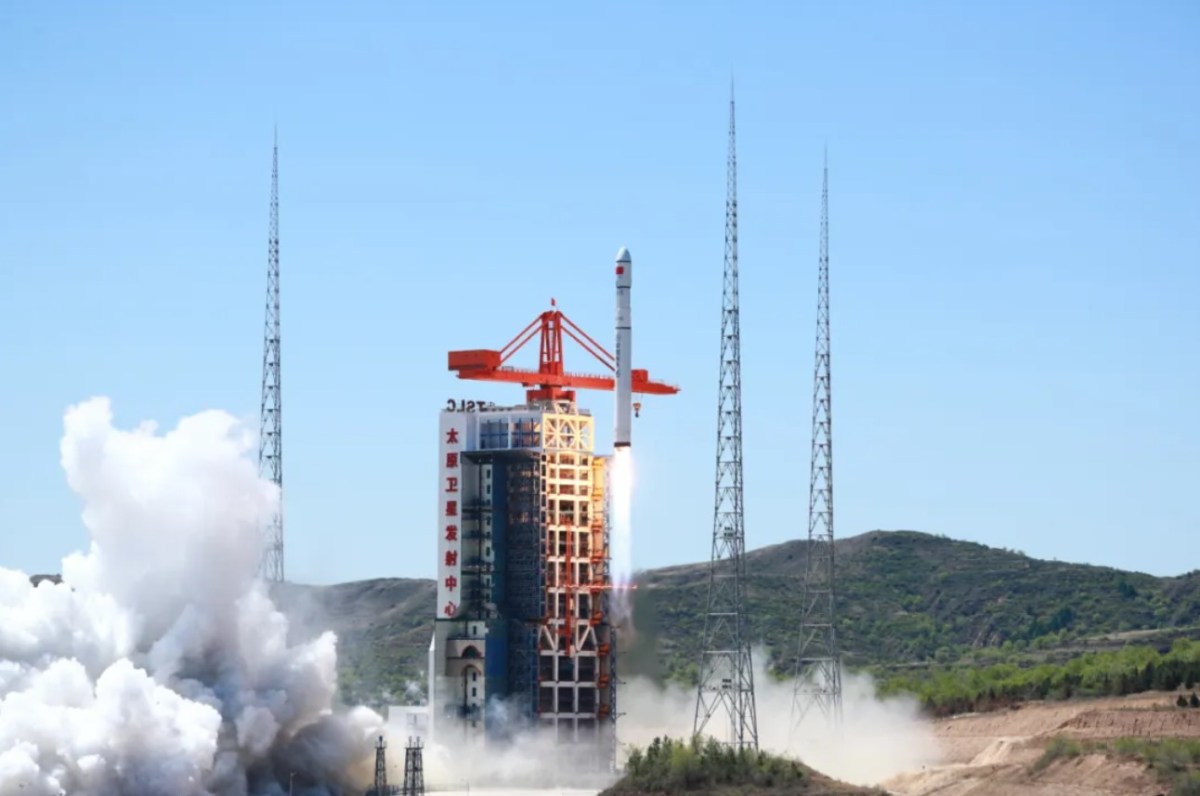HELSINKI — The new Long March 6C rocket successfully inserted four satellites into orbit late Monday on its debut flight.
The first Long March 6C rocket lifted off from Taiyuan Satellite Launch Center, north China, at 11:21 Eastern, May 6 (0321 UTC on May 7). The Shanghai Academy of Spaceflight Technology (SAST), the rocket’s manufacturer, confirmed launch success within an hour of liftoff.
Four satellites were aboard the launch. The main payload was Haiwangxing-1, or Neptune-1, an experimental, 239-kilogram X-band synthetic aperture radar satellite. Neptune-1 was manufactured by SAST for Zhihui Space Tech. The latter firm aims to launch 12 operational satellites for the Neptune constellation.
The other satellites included Zhixing 1C, another SAR satellite, this time for Beijing-based Smart Satellite. The other two are described as wide-view optical and high-resolution video satellites. The mission was a SAST rideshare launch.
The new, 43-meter-tall rocket is the latest in a line of new-generation rockets developed by SAST designated in the Long March 6 series.
The Long March 6C appears as a shorter variant of the 50-meter-tall Long March 6A without the latter’s four solid rocket boosters. The rocket is capable of lifting about 2,400 kgs to a 500-kilometer Sun-synchronous orbit (SSO). The 6A can carry 4,500 kg to a 700-km SSO. The variants provide greater launch options and flexibility.
The launch was China’s 20th of 2024 and follows the May 3 launch of the Chang’e-6 sample return mission. China aims to launch around 100 times this year.
SAST’s new rockets
The Long March 6C is not the only new SAST rocket expected to fly this year. The academy is also planning to debut its 3.8m-diameter Long March 12 later this year from a new commercial launch site at Wenchang. It will be capable of lifting 10 tons to low Earth orbit or 6 tons to a 700-kilometer sun-synchronous orbit.
The rockets are part of a new generation of Chinese rockets that use kerosene and liquid oxygen instead of toxic, hypergolic propellant. However, access to spaceports capable of facilitating these launches has slowed the rate at which the older Long March rockets can be replaced.
There are greater, yet more nebulous plans beyond the above. The academy aims to debut a 4.0-meter-diameter rocket in the next couple of years. It could use methane-liquid oxygen engines developed by a commercial entity.
A SAST promotional video released with today’s launch shows the Long March 6A and 6C next to two further rocket models. Both future models appear to have landing legs for recovery and reuse. It is unclear which rockets these are.
SAST is a major institute under the China Aerospace Science and Technology Corporation (CASC), the country’s state-owned main space contractor.
Beijing-based China Academy of Launch Vehicle Technology (CALT) is CASC’s other rocket design and manufacturing arm. CALT is developing the new Long March 10 reusable rocket for human spaceflight. One variant of which will be designed to send astronauts and a landing stack to the moon. The Long March 10 will be slowed by retropropulsion and caught by tight wires when in recoverable mode.
Commercial reusability in China
China’s efforts to develop reusable rockets do not stop there. The country’s commercial launch service providers are also working on reusable launchers. These notably include Space Pioneer’s Tianlong-3, which will be comparable in capacity to the Falcon 9 and due to launch later in the summer. Landspace is working on its Zhuque-3 stainless steel rocket at Jiuquan, while iSpace is also developing a methane-liquid oxygen Hyperbola-3 rocket. A number of these companies have also conducted hop tests, along with SAST and CASC’s sister entity CASIC.
The first orbital launch and landing attempt may however come from Deep Blue Aerospace. The firm plans to launch its light-lift Nebula-1 rocket in the second half of the year. Galactic Energy is also working towards the first launch of the Pallas-1 kerosene-liquid oxygen rocket. The first flight, expected later this year, is likely to be expendable.
CompanyRocket NameRocket TypeKey Features or NotesiSpaceHyperbola-3Methane-liquid oxygen reusablePayload capacity of 8,500 kg to Low Earth Orbit (LEO); first flight planned for 2025.LandspaceZhuque-3Methalox reusablePayload capacity up to 21,000 kg to LEO; first flight planned for 2025.Galactic EnergyPallas-1Kerosene-liquid oxygen reusablePayload capacity of 5,000 kg to LEO, or 3,000 kg to a 700 km sun-synchronous orbit (SSO).CAS SpaceKinetica 2Kerolox reusablePayload capacity of 7,800 kg to 500 km SSO.Deep Blue AerospaceNebula-1Kerolox reusablePayload capacity of 1,000 kg to 500 km SSO; first flight planned in late 2024.Space PioneerTianlong-3KeroloxComparable to Falcon 9 in launch capability; plans for a reusable first stage.OrienspaceGravity-2Kerolox25,600 kg to LEO. First flight in 2025; plans for a reusable first stage.CASCVariousVariousWorking on reusable rockets including a new-generation human-rated launcher, spaceplane, and Long March 9 super heavy-lift launcher.
Non-exhaustive list of planned Chinese reusable rockets.
